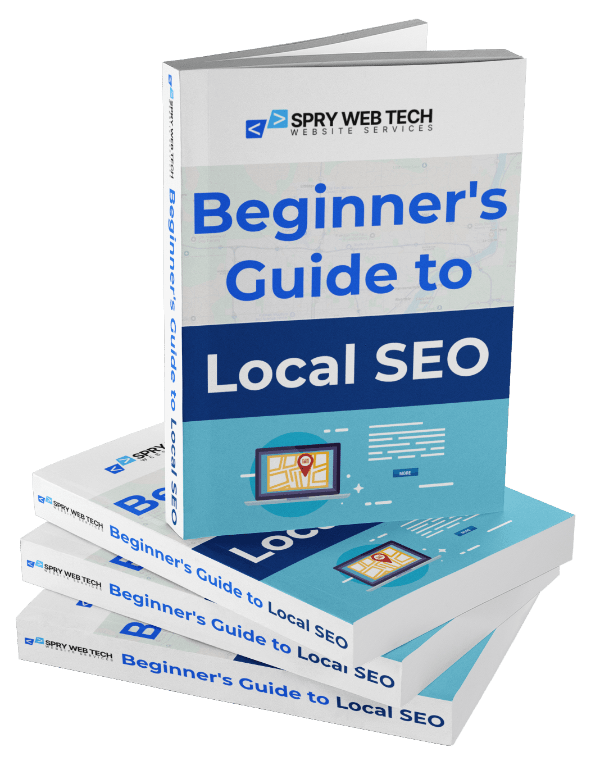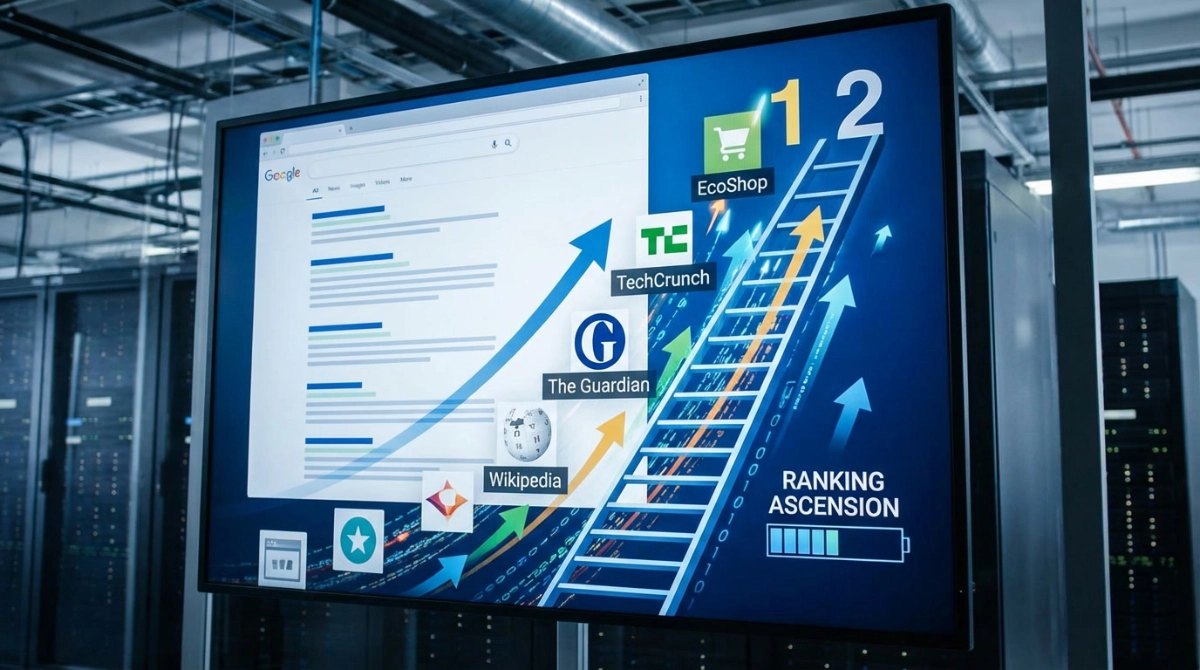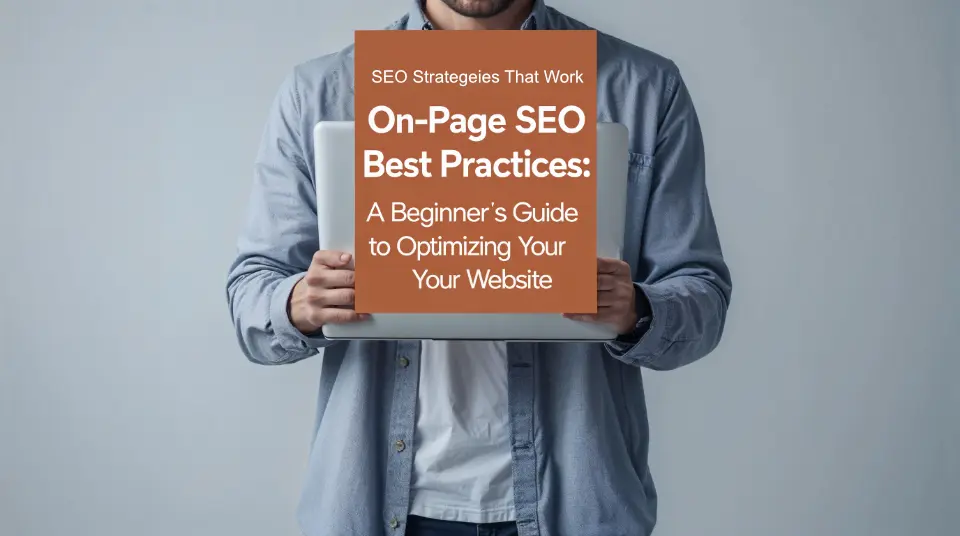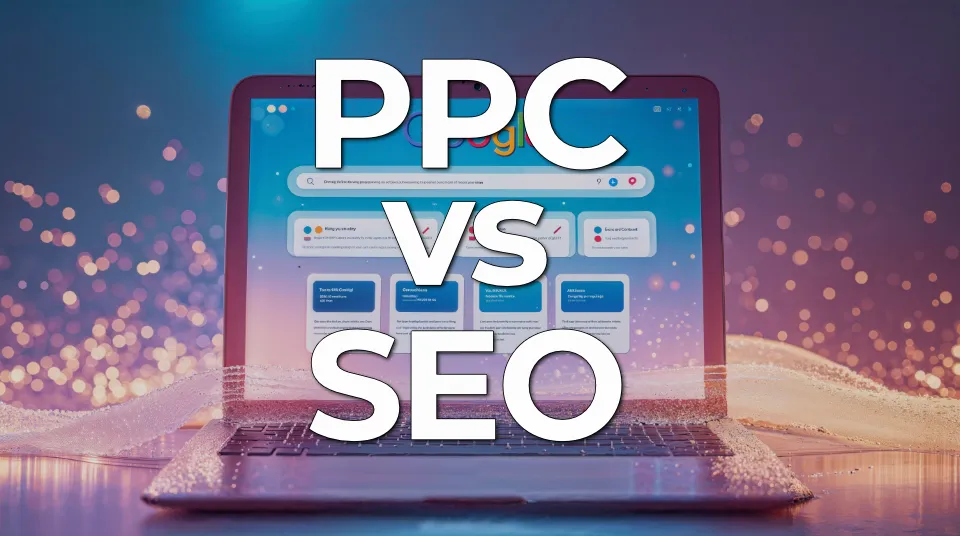Is Your SEO Strategy Ready for AI?
The world of SEO in 2025 is changing quickly, mainly because of the rise of AI technologies. It’s no longer optional for businesses to adapt their SEO strategies for AI; it’s a must if they want to be seen and stay relevant. Here are the main reasons why this change is happening:
- AI’s Growing Influence: Search engines are using AI models more and more to provide personalized content and recommendations.
- Evolution of SEO Practices: Old-fashioned methods are being replaced by data-driven strategies that focus on high-quality, factual content.
This article aims to share insights on how to effectively optimize for AI models. By understanding how AI impacts search engine optimization, businesses can get ready for the trends that will shape SEO in 2025. One important aspect we’ll explore is how to get mentioned in AI recommendations, as this will be vital for staying competitive in a constantly changing digital world.
By embracing these changes now, brands can improve their online presence and meet the standards set by AI systems that will dominate the future of search.

Local SEO Guide – Free Download. Learn the basic strategies that help propel your website to the top of the local search results. Download Now
Understanding AI’s Role in SEO
AI technologies, such as ChatGPT and Google Bard, are reshaping SEO practices significantly. They analyze vast amounts of data, influencing how search engines rank content based on relevance and quality. The integration of these advanced systems has led to a notable shift from traditional SEO strategies towards more AI-driven approaches.
Key factors include:
- Influence on Search Algorithms: AI models assess content not just for keywords but also for context, sentiment, and user intent. This allows them to deliver more accurate search results tailored to individual needs.
- High-Quality Content as a Priority: Content that is concise, factual, and well-sourced is favored by AI recommendations. Businesses must prioritize creating high-quality content that resonates with target audiences while adhering to the standards set by AI systems.
- Dynamic Adaptation Required: Companies need to maintain agility in their SEO strategies, adapting to the evolving algorithms of AI technologies. This involves understanding how AI interprets data and adjusting content accordingly.
The future landscape of SEO demands a keen awareness of these developments, ensuring that businesses remain competitive in an increasingly AI-driven environment.
The Demand for High-Quality Content
AI models prioritize content quality as a critical factor in determining search rankings. Characteristics of content favored by these models include:
- Conciseness: Information should be presented clearly and directly, avoiding unnecessary fluff.
- Factual accuracy: Well-researched data that is factually correct enhances credibility and trust.
- Relevance: Content must align with user intent and answer specific queries effectively.
According to a recent analysis and study of 3,000 websites, Ahrefs.com determined that those sites received 63% of their traffic from AI recommendations.
Strategies for creating concise and factual content involve:
- Focused Topics: Narrow down subjects to maintain clarity, ensuring that each piece addresses one primary idea.
- Data-Driven Insights: Support arguments with statistics, studies, or case examples, providing tangible evidence for claims made.
- Eliminating Clickbait: Avoid sensational headlines that do not match the content’s substance. This builds trust with audiences and aligns with AI preferences for genuine information.
The importance of sourcing and credibility cannot be understated. Citing reputable sources not only reinforces the reliability of your content but also fosters an environment where readers feel confident in sharing and engaging with your material. Trustworthy references contribute significantly to enhancing the perceived value of your content in the eyes of both users and AI systems.
Content Optimization Techniques for AI Models
To effectively prepare for SEO in 2025, businesses must embrace content optimization techniques tailored for AI models. The integration of keyword research automation, natural language processing (NLP), and semantic analysis is crucial. These technologies enhance how content is created, ensuring it meets the expectations of both search engines and users.
Generating Topic Ideas with AI
Generating relevant topics using AI not only streamlines the content creation process but also aligns with user interests. Here are several tools and techniques that assist in this endeavor:
- AI-Powered Topic Generators: Tools like BuzzSumo and AnswerThePublic leverage algorithms to identify trending topics based on user queries and search patterns. By analyzing data from various sources, these platforms provide insight into what resonates with audiences.
- Keyword Research Automation: Utilizing tools such as SEMrush or Ahrefs automates the identification of high-performing keywords. These insights help in crafting content that is optimized for search visibility.
- Natural Language Processing (NLP): NLP techniques analyze existing content to understand context and sentiment. This understanding aids in generating topic ideas that are not only relevant but also emotionally engaging.
- Semantic Analysis: This method focuses on determining the semantic relationships between words. By utilizing this technique, businesses can develop content that captures a broader range of search queries, ultimately enhancing discoverability.
To get mentioned in AI recommendations, it is essential to create content that adheres to quality standards established by AI systems. High-quality articles should be concise, factual, and well-sourced, aligning with the principles discussed earlier.
Incorporating user feedback through surveys or social media interactions can refine topic generation efforts. Engaging your audience provides real-time insight into their preferences, allowing for more targeted content development.
By employing these strategies, businesses position themselves favorably within the evolving landscape of SEO influenced by advanced AI models. Preparing for SEO in 2025 requires a proactive approach to content optimization that embraces the capabilities offered by modern technologies.
Improving Metadata and Readability
Optimizing metadata and readability is crucial for aligning with AI-driven SEO strategies in 2025. Effective titles and descriptions have a significant impact on search visibility. Here are some best practices to consider:
1. Keyword Placement
Include primary keywords early in the title and description. This enhances relevance for both search engines and users.
2. Concise Language
Aim for clarity and brevity. Descriptions exceeding 160 characters may be truncated, losing potential clicks.
3. Action-Oriented Phrases
Use engaging language that encourages users to click through. Phrases like “Discover” or “Learn” can improve engagement rates.
Understanding AI Technologies
AI technologies use natural language processing (NLP) and semantic analysis to evaluate content quality. By implementing these techniques, you can generate more relevant metadata and improve overall optimization.
Leveraging Keyword Research Automation
Using keyword research automation tools enables marketers to identify trending terms, enhancing content relevance. As you optimize for AI models, prioritize creating structured, informative content that aligns with user intent while increasing your chances of being featured in AI recommendations.
Adapting to AI Systems through Structured Data
Structured data plays a crucial role in improving visibility on search engines, especially as AI systems become more integrated into SEO practices. The use of structured data and schema markup offers several key benefits:
1. Enhanced Visibility
Structured data helps search engines understand the context of your content. This leads to better indexing and can result in rich snippets, which improve click-through rates.
2. Improved Understanding by AI Systems
Implementing schema markup allows AI models to interpret content accurately. This ensures that your website is represented correctly in AI-generated recommendations, potentially boosting your website traffic.
To effectively implement structured data on your website:
- Choose the Right Schema Markup: Identify the most relevant schema types for your content, such as articles, products, or events.
- Use Google’s Structured Data Markup Helper: This tool simplifies the process of adding structured data to your pages by guiding you through tagging the necessary elements.
- Test Your Implementation: Utilize Google’s Rich Results Test tool to ensure your structured data is correctly formatted and recognized by search engines.
By prioritizing these strategies for structured data, businesses can start optimizing for AI models, thereby increasing their chances of being included in AI recommendations and enhancing overall online visibility.
Generative Engine Optimization (GEO) Techniques
Generative Engine Optimization (GEO) techniques are becoming essential in modern SEO strategies. These methods focus on optimizing content for inclusion in generative AI systems, which are increasingly influencing how users discover information.
Key Components of GEO Techniques
1. Definition and Significance
GEO refers to the practice of tailoring content to meet the unique requirements of generative models like ChatGPT and Google Bard. As these AI systems evolve, they prioritize user engagement and contextual relevance, making GEO critical for visibility.
2. Understanding User Interactions
With the rise of generative models, understanding user behavior across various platforms is vital. Users expect intuitive responses and personalized experiences. Analyzing how users engage with AI-generated content can inform more targeted optimization efforts.
3. Optimizing Content
Several methods can enhance content for generative search results:
- Utilize natural language processing (NLP) to align content with conversational tones.
- Implement structured data to clarify context and intent.
- Focus on addressing common user queries directly within the content structure.
Incorporating these GEO techniques enables businesses to stay competitive in an evolving digital landscape. Adapting to the preferences and behaviors shaped by AI will determine effective engagement strategies moving forward.
Building Brand Visibility in AI Ecosystems
Creating a strong brand presence within AI ecosystems is essential for companies aiming to connect with consumers effectively. The following strategies can enhance visibility and mitigate challenges posed by AI-generated content:
1. Accurate Information
Maintaining up-to-date and correct information across all platforms enhances brand visibility in AI tools like Knowledge Graphs. These systems rely on accurate data to present brands effectively in search results, influencing user perception and trust.
2. Consistent Brand Representation
Ensuring uniformity in branding elements—such as logos, taglines, and messaging—across various digital platforms strengthens recognition. A cohesive brand identity helps users easily identify your business amidst the vast amount of content available online.
3. Mitigating Misinformation Risks
Companies should proactively manage and verify their information to combat misinformation often linked to AI-generated content. Implementing strategies such as regular audits of online presence and active engagement with users can help address inaccuracies swiftly.
Building a robust brand presence requires ongoing efforts to adapt to the evolving landscape shaped by AI technologies. Prioritizing accuracy, consistency, and active management fosters trust and visibility in an increasingly competitive environment.
Off-page SEO Strategies for Enhanced Recommendations
Engaging Influencers and Partnerships
In the evolving landscape of SEO, off-page strategies are crucial for boosting visibility and enhancing recommendations from AI models. Collaborating with influencers can significantly enhance credibility and reach within targeted markets. Here’s how to effectively leverage influencer marketing and partnerships:
1. Identify Relevant Influencers**
Finding influencers who align with your brand values and target audience is essential. Look for individuals with a genuine following in your niche. Tools like BuzzSumo or Traackr can help identify potential collaborators.
2. Create Authentic Engagements
Establish meaningful relationships with influencers rather than one-off promotions. Engage them in discussions about your brand, invite them to events, or co-create content that resonates with their audience.
3. Leverage Diverse Content Formats
Collaborate on various content types such as blog posts, social media takeovers, podcasts, or video series. This variety enhances engagement and allows for deeper connections with audiences.
4. Build Partnerships with Complementary Brands
Aligning with non-competing brands that share your target audience can amplify reach. Joint campaigns, cross-promotions, or bundled offerings create opportunities to tap into each other’s networks.
5. Utilize User-Generated Content (UGC)
Encourage influencers to share authentic experiences with your product or service. UGC not only fosters trust but also provides valuable content that can be featured across platforms.
The goal of these strategies is to ensure that your content gets mentioned in AI recommendations. As AI systems prioritize credible sources, well-established influencer partnerships can lead to increased visibility in search results.
Establishing a consistent online presence through collaborations enhances brand recognition across multiple platforms. Regularly engaging with influencers keeps your brand relevant and informed on current trends within the industry.
By focusing on these off-page strategies, businesses can strengthen their SEO efforts for 2025 and beyond. Emphasizing relationships over transactions will build a network of advocates who contribute to a positive brand image while improving SEO outcomes through enhanced recommendations from AI systems.
Utilizing User-generated Content
User-generated content (UGC) is important for gaining trust and getting your target audience involved. When you include UGC in your SEO strategy, it can make your brand more trustworthy and encourage people to be part of your community. Here are the main benefits and methods:
1. Trustworthiness
Genuine feedback and testimonials from users act as strong endorsements, greatly improving how people view your brand.
2. Engagement
Contests or feedback loops invite customers to share their experiences, creating a sense of community around your brand.
3. Link Building Strategies
UGC can lead to natural backlinks as users share their content across platforms, enhancing your SEO efforts.
4. Social Media Leveraging
Use social media channels to promote UGC, increasing brand awareness and authority while attracting AI recommendations.
By focusing on these aspects, businesses can effectively optimize for AI models while ensuring a strong off-page SEO presence that drives visibility and relevance in the changing digital world.
Future Trends in SEO Influenced by AI Models
The evolution of SEO in 2025 will be significantly shaped by AI technologies, leading to transformative changes in user experiences. Key trends include:
1. Personalized Recommendations
AI algorithms will analyze user behavior and preferences, delivering tailored content that aligns with individual interests. This means businesses must focus on understanding their audience deeply to enhance engagement.
2. Predictive Analytics
The integration of predictive analytics will empower marketers to make real-time adjustments to their SEO strategies. By analyzing current data trends, businesses can anticipate shifts in user behavior and optimize their content proactively.
3. Visual Search Optimization
As user interactions evolve towards visual mediums, optimizing for visual search will become essential. Incorporating high-quality images, videos, and relevant alt text enhances visibility in AI-driven search results.
To succeed in this landscape, brands must start optimizing for AI models now. Understanding how to get mentioned in AI recommendations involves ensuring that content is not only informative but also visually engaging and aligned with user preferences. Adapting to these trends will play a crucial role in maintaining competitiveness within the rapidly changing digital ecosystem.
Get Ahead of Your Competition
To thrive in the evolving landscape of SEO 2025, businesses must prioritize future-proofing SEO strategies. The integration of AI into search engines is reshaping how users interact with content. Here are key steps to stay ahead:
1. Start Optimizing for AI Models
Implement structured data and schema markup to enhance visibility. Focus on creating high-quality, factual content that aligns with AI recommendations.
2. Embrace Continuous Learning
The digital marketing landscape shifts rapidly. Regularly update your knowledge on AI advancements and SEO best practices to remain competitive.
3. Engage with Generative Models
Understand how generative AI influences search results. Optimize content for inclusion in these models while ensuring it meets user needs.
4. Monitor Performance Analytics
Utilize predictive analytics to make real-time adjustments to your strategies. This will help maintain relevance as user expectations evolve.
By taking proactive measures now, businesses can effectively position themselves within AI-driven ecosystems, ensuring they get mentioned in AI recommendations and enhance their online visibility.









